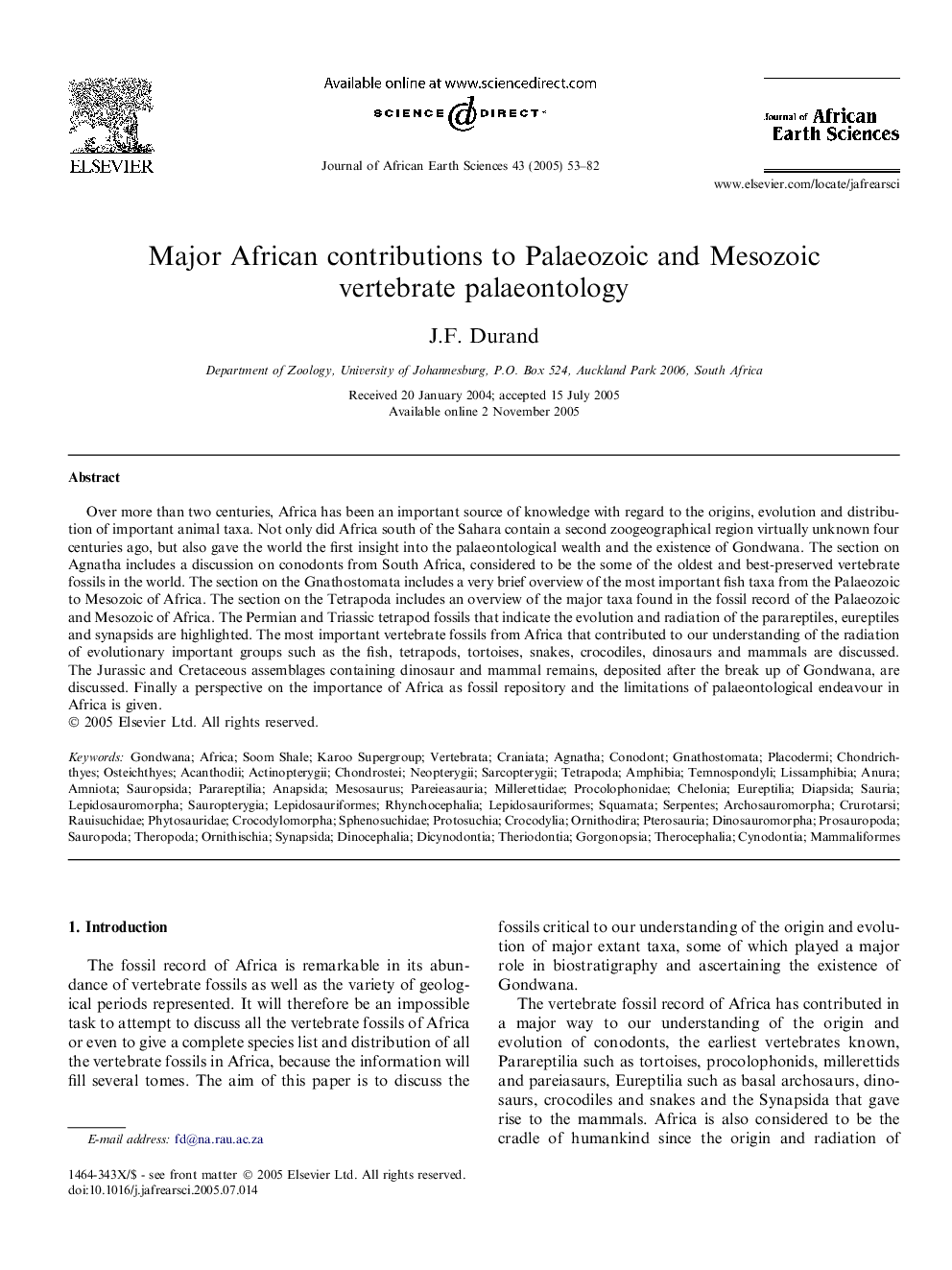| کد مقاله | کد نشریه | سال انتشار | مقاله انگلیسی | نسخه تمام متن |
|---|---|---|---|---|
| 9535298 | 1640265 | 2005 | 30 صفحه PDF | دانلود رایگان |
عنوان انگلیسی مقاله ISI
Major African contributions to Palaeozoic and Mesozoic vertebrate palaeontology
دانلود مقاله + سفارش ترجمه
دانلود مقاله ISI انگلیسی
رایگان برای ایرانیان
کلمات کلیدی
ParareptiliaDiapsidaSauropterygiaTemnospondyliAcanthodiiGnathostomataChondrichthyesNeopterygiiSarcopterygiiOsteichthyesActinopterygiiPlacodermiAmniota - آمینیوتAfrica - افریقاAnura - انوراAgnatha - بیآروارگانTetrapoda - تتراپاواAmphibia - دوزیستانVertebrata - ستون فقراتSauria - سوریاLissamphibia - لیسامفیبیاChelonia - چلونیاKaroo Supergroup - کارو سوپراگوپورConodont - کنودونتGondwana - گاندوانا
موضوعات مرتبط
مهندسی و علوم پایه
علوم زمین و سیارات
زمین شناسی
پیش نمایش صفحه اول مقاله

چکیده انگلیسی
Over more than two centuries, Africa has been an important source of knowledge with regard to the origins, evolution and distribution of important animal taxa. Not only did Africa south of the Sahara contain a second zoogeographical region virtually unknown four centuries ago, but also gave the world the first insight into the palaeontological wealth and the existence of Gondwana. The section on Agnatha includes a discussion on conodonts from South Africa, considered to be the some of the oldest and best-preserved vertebrate fossils in the world. The section on the Gnathostomata includes a very brief overview of the most important fish taxa from the Palaeozoic to Mesozoic of Africa. The section on the Tetrapoda includes an overview of the major taxa found in the fossil record of the Palaeozoic and Mesozoic of Africa. The Permian and Triassic tetrapod fossils that indicate the evolution and radiation of the parareptiles, eureptiles and synapsids are highlighted. The most important vertebrate fossils from Africa that contributed to our understanding of the radiation of evolutionary important groups such as the fish, tetrapods, tortoises, snakes, crocodiles, dinosaurs and mammals are discussed. The Jurassic and Cretaceous assemblages containing dinosaur and mammal remains, deposited after the break up of Gondwana, are discussed. Finally a perspective on the importance of Africa as fossil repository and the limitations of palaeontological endeavour in Africa is given.
ناشر
Database: Elsevier - ScienceDirect (ساینس دایرکت)
Journal: Journal of African Earth Sciences - Volume 43, Issues 1â3, October 2005, Pages 53-82
Journal: Journal of African Earth Sciences - Volume 43, Issues 1â3, October 2005, Pages 53-82
نویسندگان
J.F. Durand,